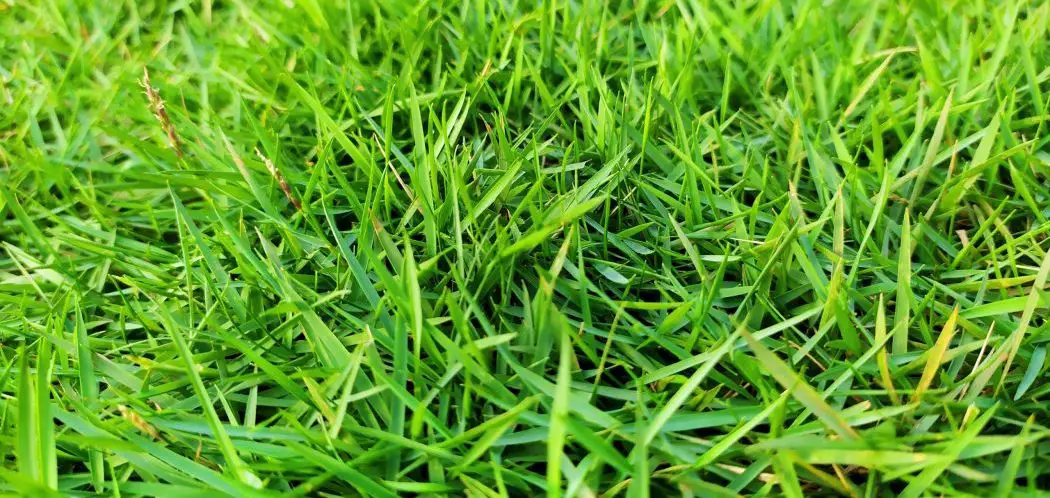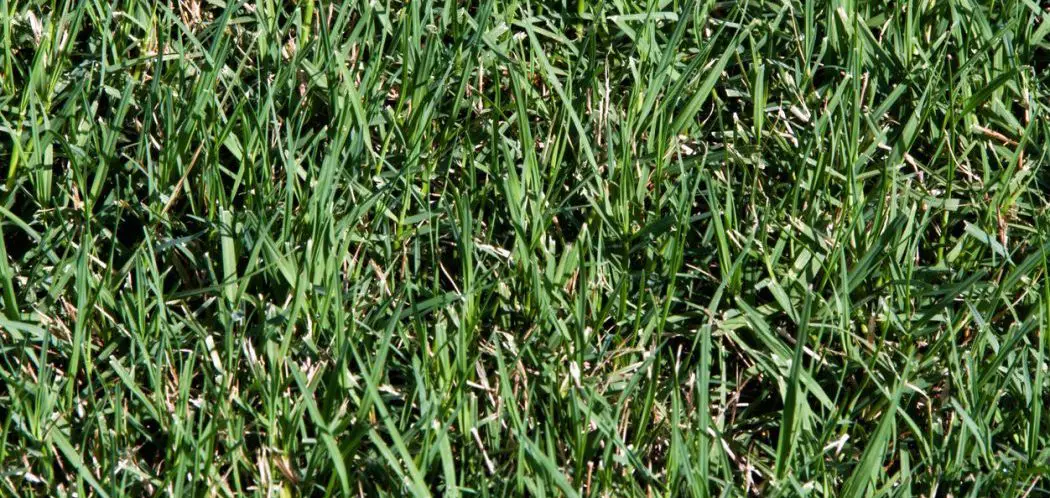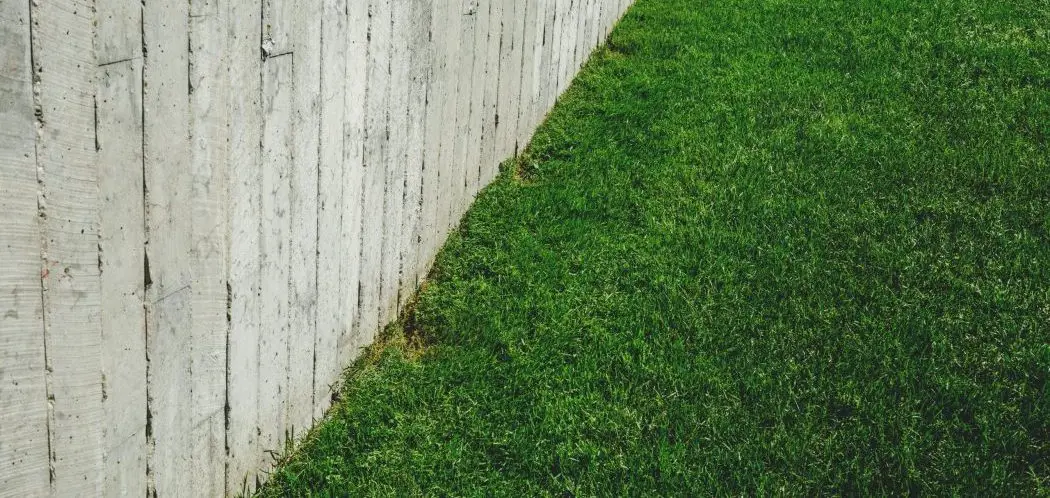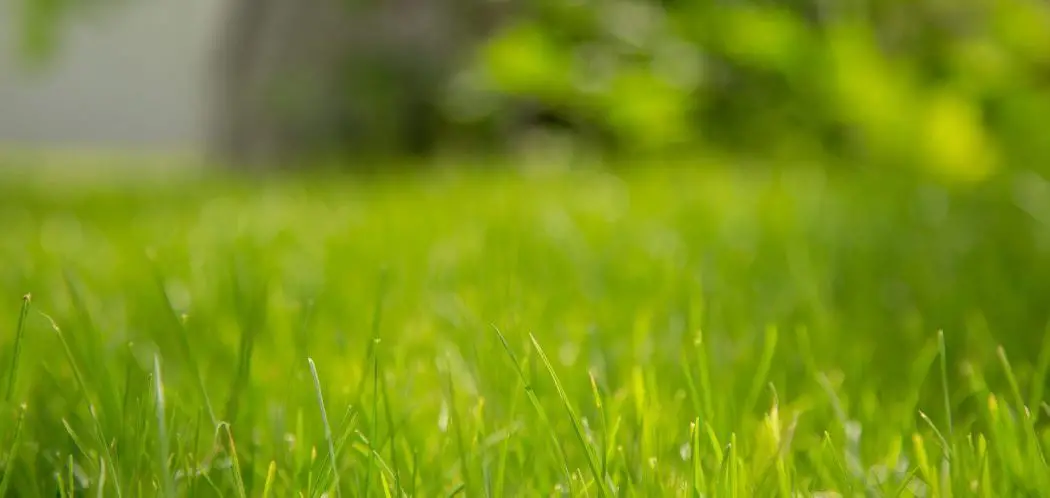Zoysia is a warm season grass that is popular for its heat tolerance and durability. While the grass is slow growing, it produces a thick turf that inhibits weed growth.
A lawn of only Zoysia will not do well in shaded areas and will become unsightly when the grass enters its winter dormancy. To counteract these negatives, we need to look at what grass mixes well with Zoysia.
Cool Season Grasses
When you want your lawn to look lush year-round, you’ll need to pair Zoysia with cool season grass. Your cool season grass will emerge and shine through as your Zoysia enters its dormancy period.
Kentucky Bluegrass
Kentucky Bluegrass is one of the most popular options for cool season grasses. This perennial grass offers easy growth and winter hardiness once established. Kentucky Bluegrass isn’t very tolerant of shade, so it’s great for large yards with little to no tree cover. The grass gets its name from its rich blue green color.
Perennial Rye
Perennial rye grass germinates and establishes quickly. This quality makes it an excellent choice for mixing in with your Zoysia as it will fill any bare spots effectively. It can also be used in areas that are prone to erosion such as drip lines and on hills. Rye grass does not tolerate drought well, so it will need more frequent watering than your Zoysia. It is extremely hardy and stands up to foot traffic well. Perennial rye grass grows in a wide variety of soil types, and stands up well to pH variations.
Tall Fescue
The cool season grass with the highest heat tolerance is Tall Fescue. Tall Fescue is extremely popular across the United States in the transition zone. Tall Fescue can attribute its unique drought and heat tolerance to its deep root system. This variety is easily established through seed.
When Should You Be Seeding?
When adding cool season grass to your lawn, you should be seeding in the fall. Cool season grasses prefer mild to cold temperatures. Their seeds grow best when the temperature of the soil is between 50 and 60 degrees Fahrenheit. The fall also offers a good amount of precipitation to keep your seeds moist. If the seeds dry out, they will not germinate.
Common weed growth is stunted in the fall. This gives your new plants less competition for resources as they germinate and establish themselves.
Seeding should be completed at least 45 days before the first predicted frost. This time frame provides enough time for the seeds to establish a sturdy root system that will help them survive their first winter.
Kentucky Bluegrass will take up to 28 days to germinate. Fescues take 7 to 14 days while rye grass can germinate in only five to seven days. During this time, you will need to keep the seeds well-hydrated.
Approximately two months after your seeds have germinated, you’ll need to fertilize your new grass. Fertilizing will give it the nutrients it needs to continue growing.
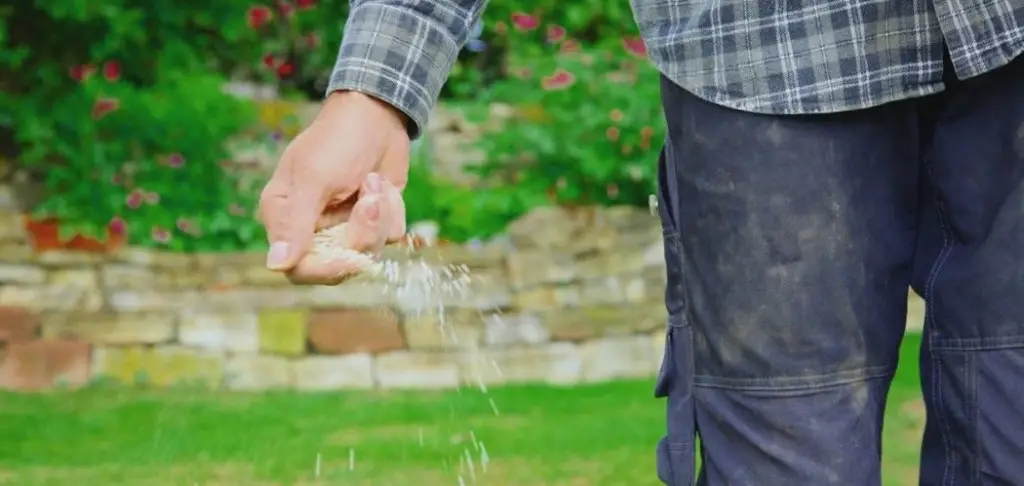
Warm Season Grasses
If you don’t mind your lawn looking lackluster in the fall and winter but want an incredible yard in the spring and summer, pair a fellow warm season grass with your Zoysia.
Bermuda
Bermuda grass is a popular option when selecting a warm season grass. Its high demand is due to its incredible resilience to heat and drought. Bermuda grass also stands up well to high foot traffic, making it perfect for busy lawns. Bermuda grass has the fastest growing rate of any warm season grass. Its winter dormancy period does last longer than other grasses.
Bahiagrass
Bahiagrass is well-suited for a variety of soil types in warm climates. It thrives in sandy soils and clay soils with poor drainage. Bahiagrass grows slowly but is extremely durable once established. It does not waver when encountering high heat and drought conditions. Bahiagrass bounces back from dormancy much quicker than Bermuda grass. It is ideal for southern coastal climates.
Centipede
Centipede grass is not as drought tolerant as its warm season comrades. It is extremely resilient to heat, and it grows well in sandy soils. Bahiagrass is much more tolerant of shade than Bermuda grass is. It’s the slowest growing warm season grass. The biggest advantage of Bahia grass is that it doesn’t experience a true dormancy during the winter. It stays green and beautiful throughout the seasons if properly maintained.
St. Augustine
St. Augustine grass is a widely used warm season grass. It can grow in any well-draining soil type. It withstands extreme heat and salt. These qualities make it very popular along the Gulf Coast. While St. Augustine grass loves to bask in the sun, it does tolerate shade more than other warm season grass varieties. St. Augustine stands up to moderate foot traffic and shouldn’t be planted in areas with a lot of pedestrian activity.
Adding to Established Zoysia
Once you have chosen the grass that you would like to mix with your existing Zoysia, it’s time to get growing.
Overseeding should be completed in the spring for warm season grasses and in the fall for cool season grasses. Spreading seeds during the plant’s optimal growing time is the first step in the recipe for a healthy lawn.
Mow your lawn on the lowest setting of your mower without scalping the existing turf. Then, rake away all lawn clippings and examine the lawn closely. If you see a mat of broken down organic material, you’ll need to remove it.
This blanket of broken down plant material is commonly referred to as thatch. Dethatching your lawn should be done regularly to ensure proper oxygen exchange between the atmosphere and the soil. Small areas can be cleared away with a thatching rake, and for large areas, there are mechanical dethatchers that can do the work for you.
If you find that areas of your lawn are suffering from soil compaction, now is the time to aerate the soil. Aerating the soil will help established turf grow stronger and can give new turf a better chance to grow.
The packaging of your grass seed will tell you at what rate to apply the seed. If you’re overseeding your entire lawn, you’ll want to ensure even and adequate coverage. Applying seed too close together will result in clumps of grass competing with each other.
Once you’ve accomplished sowing your seed, give your lawn a good soak. This will hydrate the seeds and anchor them into the ground, so they don’t get carried away by a gust of wind.
Crafting a New Lawn
If you don’t like the grass you currently have and want to transform your lawn into a gorgeous Fescue/Zoysia mix, you’ll have to first rid the lawn you have of existing plant life.
Glyphosate
The most effective way to accomplish this would be to apply glyphosate across the entire lawn. Glyphosate is a nonselective systemic herbicide. This herbicide will kill anything green it comes into contact with by infiltrating the plant. The chemical circulates throughout the plant, killing it in its entirety.
Glyphosate breaks down quickly in the soil and will not affect any future plants. Once your existing lawn has died, you’ll want to remove the perished plant material. The plants should easily rake up and away, but you may need to lightly dig for grasses with roots that grow very deep.
Planting Zoysia
Warm season grasses such as Zoysia should be planted in mid to late spring when there is no danger of frost. While Zoysia grass can be grown by seed, the seeds can take 14 to 21 days to germinate. Most people prefer to grow Zoysia by sod or plugs for this reason.
If you plan to pair your Zoysia with a cool season grass, elect to grow it by sod. Zoysia sod provides instant beauty and speedy establishment. When fall approaches, simply overseed the sod with your cool season grass seed of choice.
If pairing with another warm season grass, you can mix the seeds together and spread them all at the same time, or purchase plugs of that variety and plant them intermittently with your Zoysia.
Allow your plants to establish roots before the first mow. Mowing too soon after seeding an area could rip up new plants that haven’t had a chance to anchor themselves yet.
Zoysia’s durability and low-maintenance requirement make it an attractive choice for lawn enthusiasts. When Zoysia doesn’t completely satisfy your needs, look into mixing up the composition of your lawn. You can choose another warm season grass to plump up your turf in the summertime, or you can choose a cool season grass that will stay beautiful when Zoysia enters dormancy.
In Summary
When choosing a grass to combine with your Zoysia, be careful to consider its maintenance needs as well. Zoysia doesn’t require much watering, and pairing it with a grass that needs excessive irrigation would result in the death of at least one of the grasses. Adjust the maintenance accordingly to find a delicate balance.
This could include watering more sporadically, fertilizing more often, or incorporating compost into areas that need increased water retention.

